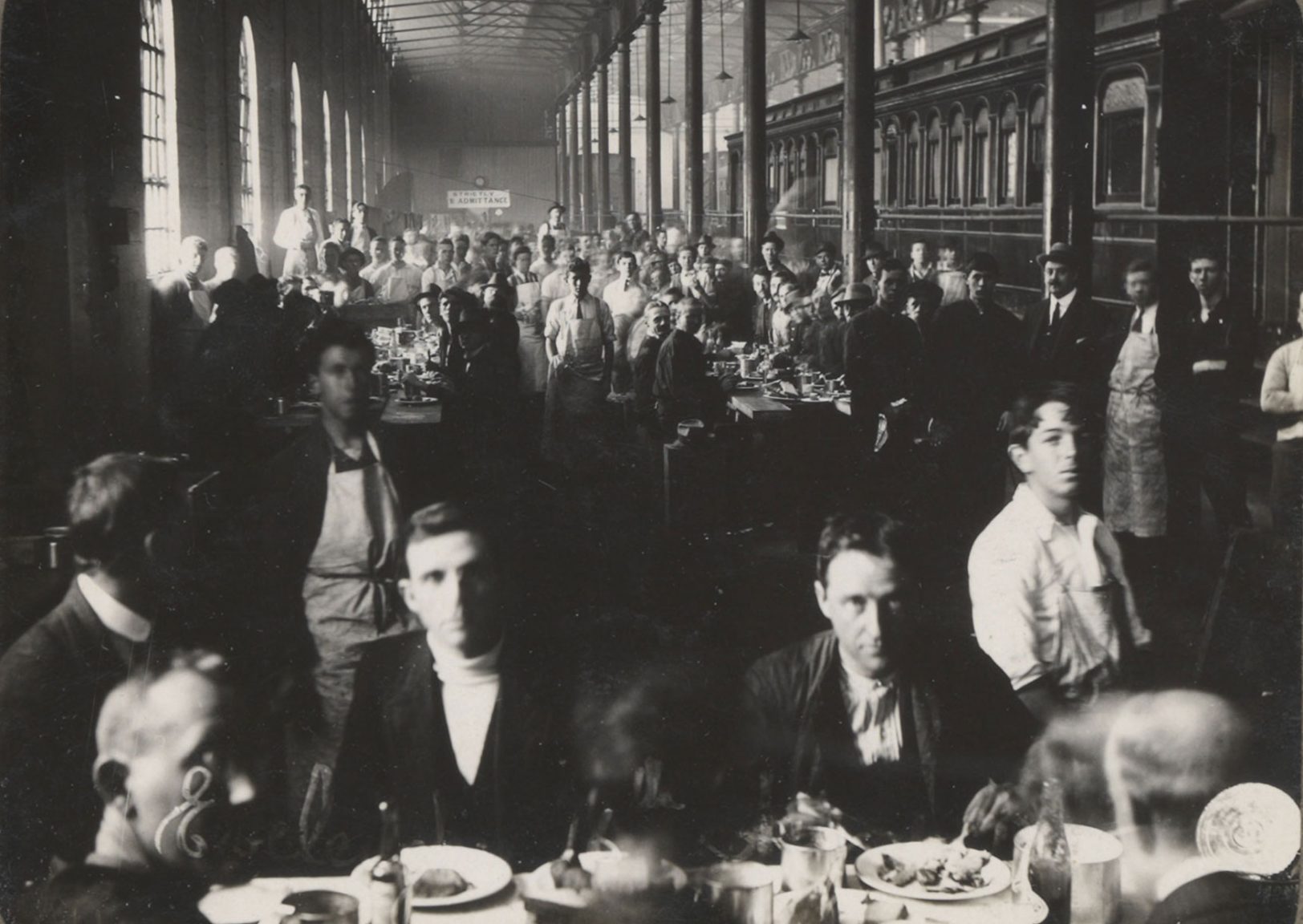Carriageworks and the City of Sydney co-present a free public exhibition, 1917: The Great Strike, to commemorate the centenary of one of Australia’s largest industrial conflicts. Taking place at Carriageworks from 15 July – 27 August 2017, the exhibition brings together historical objects such as union banners, badges and certificates, archival photographs, film and oral testimonies, alongside commissioned artworks by contemporary artists Raquel Ormella, Tom Nicholson and Andrew Byrne, Will French, Franck Gohier and Sarah Contos. On Saturday 5 August, The Great Strike Community Day commemorates the centenary of this important historical moment and explores its contemporary resonances through artist talks, panel discussions, performances and workshops at Carriageworks.
Co-curated by City of Sydney Historian Laila Ellmoos and Carriageworks Curator Nina Miall, the exhibition examines the Great Strike which originated at the Eveleigh Railway Workshops (now Carriageworks) and the Randwick Tram Sheds on 2 August 1917, against the backdrop of World War I. Around 5,790 employees downed tools in protest against the card system, a new way of monitoring worker efficiency. During the six-week strike, an estimated 77,350 NSW workers across a range of industries walked off the job. Many railway and tramway employees never got their jobs back, or were demoted in their role.
Carriageworks Artistic Director, Lisa Havilah said: “While the industrial action of The Great Strike lasted for six weeks, its consequences lingered for decades. Carriageworks has engaged a group of contemporary Australian artists to respond to this major historical event that occurred on our site, with each artist creating new work for the exhibition.”
Lord Mayor Clover Moore said: “This event changed the face of Australia, politicising our workforce and creating a generation of politicians, including future premiers and prime ministers. A century later, this exhibition will use large-scale striking images, moving footage, oral history excerpts, music and poetry, alongside commissioned artworks to tell the story of a movement that started in the old Eveleigh railway workshops. The City is proud to support and co-curate this fascinating exhibition.”
Descendants of those involved in the strike are invited to join members of the general community for The Great Strike Community Day at Carriageworks on Saturday 5 August, with full details of the program of events to mark the 100-year anniversary to be announced shortly. A richly illustrated publication featuring essays addressing different aspects of the strike alongside artist texts will be available at Carriageworks throughout the duration of the exhibition.
Artist projects for 1917: The Great Strike:
Melbourne-based artist Tom Nicholson and NY-based composer Andrew Byrne collaborate on a large-scale brass band performance which takes its cue from an archival photograph in which railway workers gather at Carriageworks to unveil an honour board, drawing inspiration from the collective action that characterised the strike.
Sydney-based artist Sarah Contos investigates the vital contribution made by women to the Great Strike, both through public protest and on the home front, and acknowledges this in an elaborate patchwork quilt made for the exhibition.
Darwin-based printmaker Franck Gohier produces a ‘snakes-and-ladder’-style installation of prints which explore the graphic language of trade union symbolism and imagery.
Sydney-based artist Will French examines the concept of time, the key cause of The Great Strike, through an old-fashioned train schedule board, whose hand-crafted form speaks to the skill and artisanship of the Eveleigh railway workers.
Canberra- and Sydney-based artist Raquel Ormella creates a series of textile works which feature the names of prominent strikers and which are made from a variety of recycled labourers’ uniforms. At the Great Strike Community Day, these small textile banners will be hand-carried to various homes, buildings and parks in the neighbouring suburbs of Redfern, Erskineville, Newtown and Macdonaldtown, which were known dwellings of railway workers or sites of strike activity one hundred years previously.
